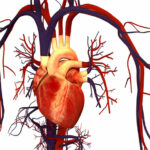FOOD FOR THOUGHT
TOPPING UP THE TANK
It’s often said that we run on fuel just as a car runs on petrol. In fact we burn a mix of three key fuels that we get from the foods and drinks we consume. Nutrition scientists call these fuels “macronutrients” because our bodies need lots of them. They provide us with energy (calories or kilojoules) along with vitamins and minerals and phytonutrients. They are (in alphabetical order):
- Carbohydrates (sugars and starches) from fruit, vegetables, legumes, grains, some nuts and milk. These foods give us much more than energy, they provide us with the fibre, vitamins, minerals and phytonutrients we need. – 1 gram of carbohydrate contains 4 calories or 17 kilojoules.
- Fats from nuts, seeds, oils, avocados, fish, meat, dairy foods and coconuts provide us with the fatty acids that are part of our cell membranes and they help us absorb the fat-soluble vitamins A, D, E and K. – 1 gram of fat contains 9 calories or 37 kilojoules.
- Proteins from dairy foods, eggs, fish, meat, chicken, legumes, nuts and grains. These are the body builders. They maintain our body tissues and help us meet our needs for certain vitamins (especially B vitamins) and minerals (especially iron, zinc and calcium from dairy foods if you eat them). – 1 gram of protein contains 4 calories or 17 kilojoules.
Our fuel mix changes at different stages of our lives. A growing baby has different needs from a toddler, a teenager, a sedentary adult, a very active adult, an elderly person, or someone with a chronic condition such as diabetes.
Mother’s milk provides the perfect mix of nutrients—carbs, fat, protein and many vitamins and minerals—for our babies to grow and thrive and that’s all they need (or baby formula) for the first six months of life. But after infancy, we have considerable flexibility in our fuel mix options because we are omnivores. Our diet is not limited to One Size Fits All. It doesn’t need to; it never has because we evolved to be adaptable. That’s what made us successful in populating the planet and thriving in very different parts of the world with very different food supplies.

These days, our tastes and our family and cultural background play a large part in what we eat and like to eat. Remember, it’s the overall quality and quantity of the foods we consume – what we put on our fork or pick up with our fingers or chopsticks is what really matters. That means building healthy eating habits and being a good role model for the kids – they are watching us more carefully than we will ever know.
–Reproduced from The Good Carbs Cookbook (Murdoch Books) with permission.







